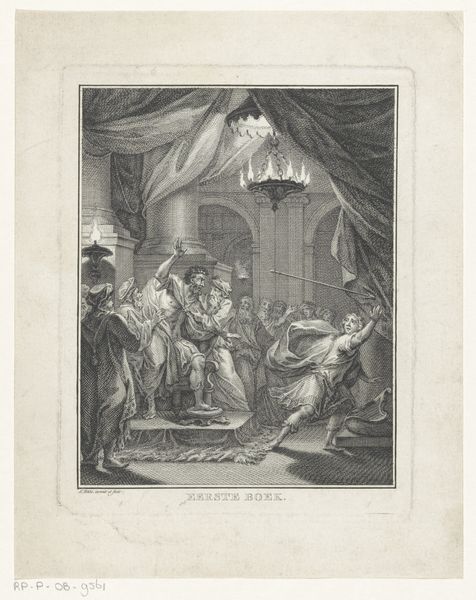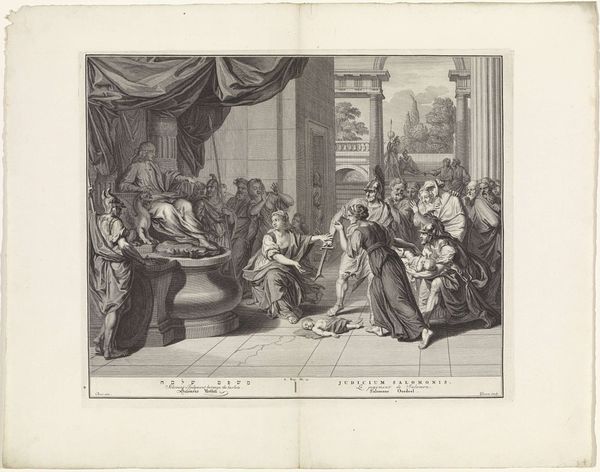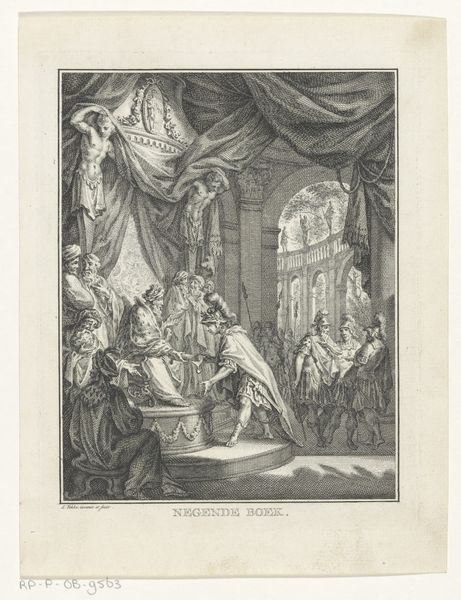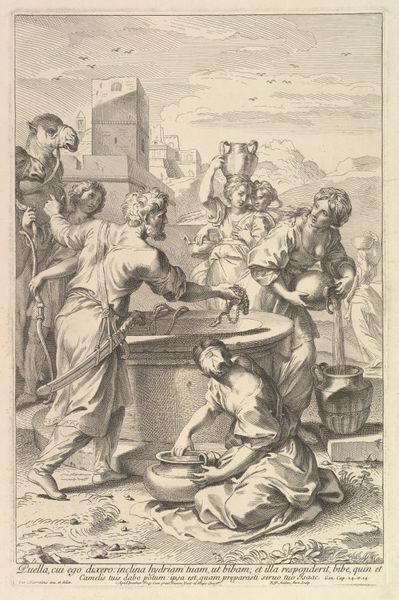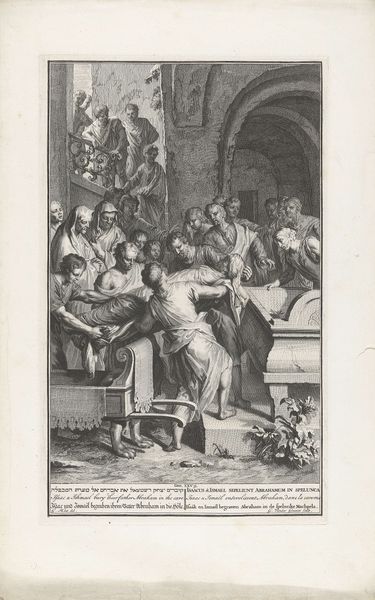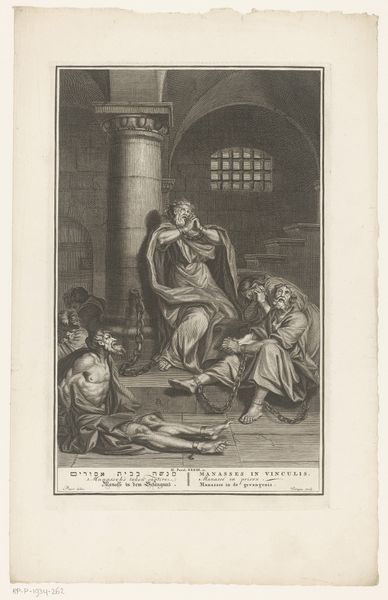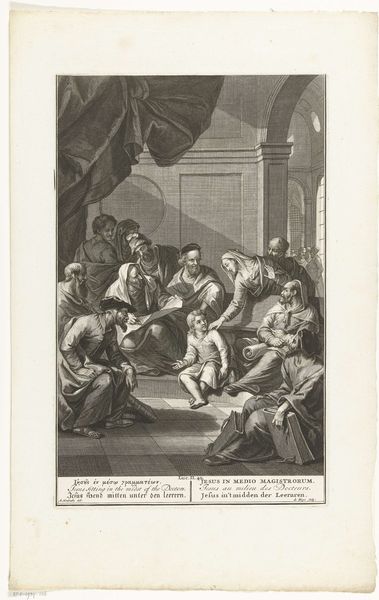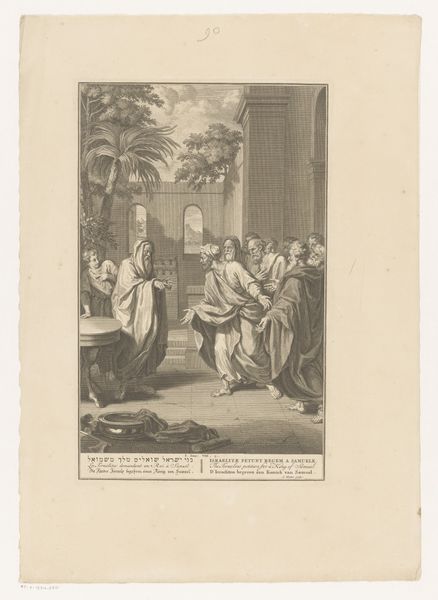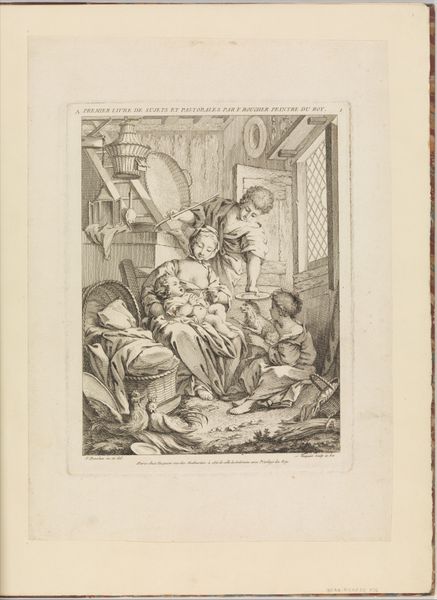
print, engraving
#
narrative-art
#
baroque
# print
#
figuration
#
classicism
#
line
#
history-painting
#
engraving
Dimensions: height 360 mm, width 222 mm
Copyright: Rijks Museum: Open Domain
Curator: This engraving, created around the 1711s, is entitled "Atalja en Joas," and it's currently housed here at the Rijksmuseum. Editor: Immediately, I'm struck by the stark contrast. The rigid, almost theatrical presentation of power clashes violently with the chaotic struggle unfolding in the foreground. Curator: Indeed. It's a work by Willem de Broen, depicting a pivotal historical narrative. Notice the sharp lines characteristic of engraving and consider the labour invested in such meticulous detail using those techniques. What do we learn about printmaking’s place within the artistic hierarchy of the time? Editor: It clearly reflects the influence of both classicism and baroque styles. The architecture suggests a sense of order, while the dramatic poses and swirling drapery embody a dynamic, baroque sensibility. Consider how such prints functioned within 18th-century Dutch society. Did they disseminate particular political viewpoints or moral lessons? Curator: Absolutely. The print's inherent reproducibility allowed for a widespread circulation of this particular interpretation of biblical history. How does the artist’s process elevate the status of this imagery to legitimize the narratives of authority being projected through cultural consumption? Editor: The theatrical staging—the raised platform, the watchful king—emphasizes the performative aspect of power and justice. We should also consider the role the museum plays in continuing this dialogue by placing such works on display. Curator: Right. Furthermore, the physical act of engraving, translating a scene onto a copper plate then printing, transformed this scene into a commodity. And let's not overlook that the materials and technical skill contribute just as much to its value as the subject matter it presents. Editor: Precisely. Viewing art is never a passive experience; social structures affect its distribution. I would add that, thinking about the artwork’s title, and its biblical implications, it reflects how social mores can manipulate popular opinion and serve institutional directives through the use of religious allegory. Curator: It certainly provides rich food for thought concerning social consumption and art as artifact. Editor: It gives you much to ponder as to how artistic styles shape and record momentous occasions and ideas across the passage of time.
Comments
No comments
Be the first to comment and join the conversation on the ultimate creative platform.
